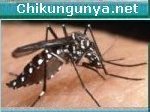The New York Department of Health and Mental Hygiene confirmed that two New Yorkers tested positive for West Nile. The two patients, a 73 year-old woman in Queens and a 60-year old man in Bronx became ill in late July and were hospitalized in early August with encephalitis and meningitis, respectively. Both patients are recovering, the woman still in the hospital, while the man has already been discharged. While the man had left New York City recently, and thus could have been infected elsewhere, the woman have not left the Big Apple in a long time. According to the NYC-DHMH, last year, there were 18 confirmed cases of West Nile, and three of these patients died. Citywide vector surveillance shows an increased percentage of West Nile-positive mosquito pools relative to last year's numbers. This year, WN-positive mosquito pools have been found in Brooklyn, Queens, Bronx and Staten Island, with most positive pools in Queens and Staten Island. Numbers can be found here. Accordingly, the NYC-DHMH is conducting larvicide [probably Bti] in parts of Staten Island, the Queens and the Bronx, as well as adulticide treatments in Brooklyn, Queens and Staten Island.
Thursday, August 21, 2008
Tuesday, August 12, 2008
Imported case of chikungunya reported in Bologna, Italy
EmiliaNet and ProMedMail reports a confirmed imported case of chikungunya in a 50 year old Italian of Sri Lankan origin in Bologna, Italy. The imported case was detected following the patients visit to his doctor and his admission to Maggiore Hospital in Bologna with high fever, joint pains and widespread malaise. The symptoms started on August 1 2008, one day after his return from Sri Lanka. A chikungunya epidemic is raging on in Sri Lanka, with 10000-15000 cases reported in June in Ratnapura district alone. According to the reports the patients condition is stable, and he will be discharged during the day. Considering that the viraemic period of chikungunya is 2-6 days , I find it curious that he's not held in the hospital for isolation to prevent the dissemination of the disease.
Very prudently, a regional protocol was implemented to eliminate mosquito larvae (and hopefully adults) within a radius of 100 meters from the locations where the patient stayed between his arrival to Bologna and his hospitalization.
Hopefully, the swift and commendable reaction of the Italian authorities will be sufficient to avoid the recurrence of the chikungunya epidemic that occured in Emilio-Romagna last year. However, this case might be just the tip of the iceberg as many mildly symptomatic cases might not get reported. This coincides with the seasonal increase of the local Aedes albopictus population. This imported case re-emphasizes the threat of chikungunya emergence in all areas with competent vector species and climatic conditions (e.g. the South-Eastern United States).
Very prudently, a regional protocol was implemented to eliminate mosquito larvae (and hopefully adults) within a radius of 100 meters from the locations where the patient stayed between his arrival to Bologna and his hospitalization.
Hopefully, the swift and commendable reaction of the Italian authorities will be sufficient to avoid the recurrence of the chikungunya epidemic that occured in Emilio-Romagna last year. However, this case might be just the tip of the iceberg as many mildly symptomatic cases might not get reported. This coincides with the seasonal increase of the local Aedes albopictus population. This imported case re-emphasizes the threat of chikungunya emergence in all areas with competent vector species and climatic conditions (e.g. the South-Eastern United States).
Thursday, August 7, 2008
Human West Nile cases increasing in the US
Human West Nile cases are increasing according to ArboNet and ProMedMail (see figure). The total number of cases reported nearly doubled during the last week, and a similar trend is expected in the coming weeks. However, the total number of cases this year is significantly reduced compared to last year, and there were only two fatalities so far this year. At the same time, the Canadian Cooperative Wildlife Health Center reported 26 West Nile-positive birds in Ontario. Nebraska, Nevada and Ohio reported their first confirmed human West Nile cases this year in the last few weeks.
Monday, August 4, 2008
Three more cases of chikungunya found in Singapore
Three more cases of chikungunya have been found in Singapore, reports ProMedMail based on the People's Daily Online. The total number of chikungunya cases so far has been 48 in 2008. The three new cases involve 2 foreign workers and a local delivery driver. Local transmission of the virus is assumed, as the patients have not left Singapore recently. The two foreign workers are treated in hospital, but the Singaporean driver was allowed to return to work.The Ministry of Health is carrying out active case detection in the location of these cases. The press release on the website of the Ministry of Health of Singapore also reveals that mosquito breeding sites have been found in the premises of 10 factories in the area, and the mosquito control has been initiated. The first case of chikungunya was reported in Singapore in January 2008. Mod TY on ProMedMail adds that the continuing chikungunya activity in Singapore, in spite of active efforts of breeding site reductions, represents a risk of introduction to countries which have significant populations of competent Aedes mosquitoes (such as the US), due to the significance of Singapore in terms of international trade and travel. Interestingly, the location of chikungunya cases mentioned in the report (Kranji Way) is quite close to the city of Johor Bahru in Malaysia. One would not be surprised to see additional chikungunya cases in that city.
Subscribe to:
Posts (Atom)
















